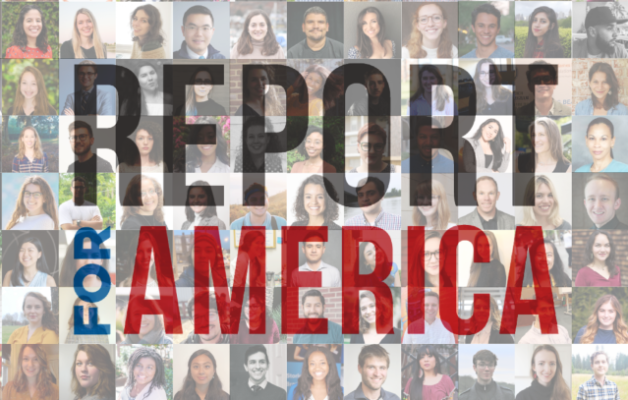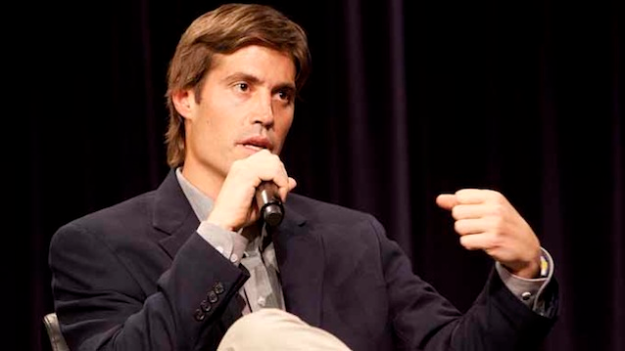 How much support do newspapers owned by cost-cutting corporate chains deserve? It’s a dilemma. On the one hand, the people who live in communities served by those papers need reliable news and information. On the other hand, subsidizing them with money and resources could be considered a reward for bad behavior.
How much support do newspapers owned by cost-cutting corporate chains deserve? It’s a dilemma. On the one hand, the people who live in communities served by those papers need reliable news and information. On the other hand, subsidizing them with money and resources could be considered a reward for bad behavior.
Last week Report for America, or RFA, announced that it would send 225 journalists to news organizations in 46 states and Puerto Rico during 2020-’21. With local news in crisis even before the COVID-19 pandemic, it was a welcome piece of good news. Most of the organizations that will host these young journalists are either independent or part of small chains, and they include a sizable number of public broadcasters, nonprofit start-ups, the Associated Press and the like. Locally, The Bay State Banner will be getting a reporter.
But in looking over the list, I also noticed a substantial number of newspapers that are part of corporate chains. By my count, 15 papers are part of McClatchy, which recently declared bankruptcy after staggering under unsupportable debt for many years. Twelve are part of Gannett, recently merged with GateHouse Media; both chains are notorious for slashing their newsrooms, and not just since COVID-19 reared its head. One reporter is even going to Cleveland.com, the website of The Plain Dealer and the scene of a recent union-busting effort on the part of Advance Publications.
As I said, it’s a dilemma. If you attempt to punish chain owners for squeezing out revenues at the expense of newsroom jobs, you wind up hurting communities.
I contacted Report for America co-founders Steven Waldman, who serves as RFA’s president, and Charles Sennott, who’s the chief executive officer and editor of The GroundTruth Project, of which RFA is a part. Their answers have been lightly edited. First Waldman:
My general answer is: Yes, half of our placements are in nonprofit, and others are in locally owned commercial entities. But we do indeed have some placements in newspapers that are owned by chains. Our primary standard is: Will this help the community? So we have on occasion accepted applications from newspapers with the problems you mentioned if we were convinced that they would use the reporter to better serve their readers. If we can be a positive force in helping those newspapers tip more in the direction of great journalism, we view that as a real positive step…. [Ellipses Waldman’s.] In effect, we’re creating hybrid nonprofit/for-profit models that provide even better local journalismBy the way, we have always had newspapers like that in the program, as part of the mix. That’s not new.
Now Sennott:
One of the stronger papers in our original Report for America class of 2018 was the Lexington Herald-Leader, a McClatchy paper in Kentucky. They pitched us on reopening the Pikeville Bureau in the heart of coal country in Eastern Kentucky, a bureau they had been forced to close 10 years earlier. They felt they were not serving well the community there. We placed RFA corps member Will Wright there and he became one of our true stars, breaking a story on a water crisis in which tens of thousands of residents did not have access to clean drinking water. His reporting turned a spotlight on this issue and helped the community force the county officials to repair the work and restore the access to clean drinking water. I went to Pikeville to work alongside Will Wright on this story and saw his incredible impact in that community with my own eyes. That is what we care about, serving the communities in these under-covered corners of America. And that’s why we have always been proud of our work with the Lexington Herald and why we did not rule out McClatchy as a place for us to look for RFA host newsroom partnerships, even if it is a chain that is going through hard economic times.
We did an enterprise project with Will Wright and two other reporters in rural Appalachia. Here is a link to the project, which was also featured on GroundTruth, as home of RFA:
https://thegroundtruthproject.org/projects/stirring-the-waters/
Also, we got news today of a full-page ad was taken out by Republicans and Democrats thanking McClatchy for its service to Kentucky.
And adding a poetic new chapter to the story, Will Wright has been accepted by The New York Times for its very competitive fellowship. And no, we are not leaving them high and dry. In this new class, we will have three journalists (two reporters and one photographer) at the Lexington Herald.
Sending an RFA journalist to a Gannett paper isn’t going to lead directly to a layoff. More public-accountability coverage is in everyone’s interests. And the chains, unfortunately, have a monopoly in many parts of the country, so it’s not like RFA could send someone to another news organization in that community.
Overall, I think RFA is doing the right thing — even if it makes me a bit queasy.
Talk about this post on Facebook.








